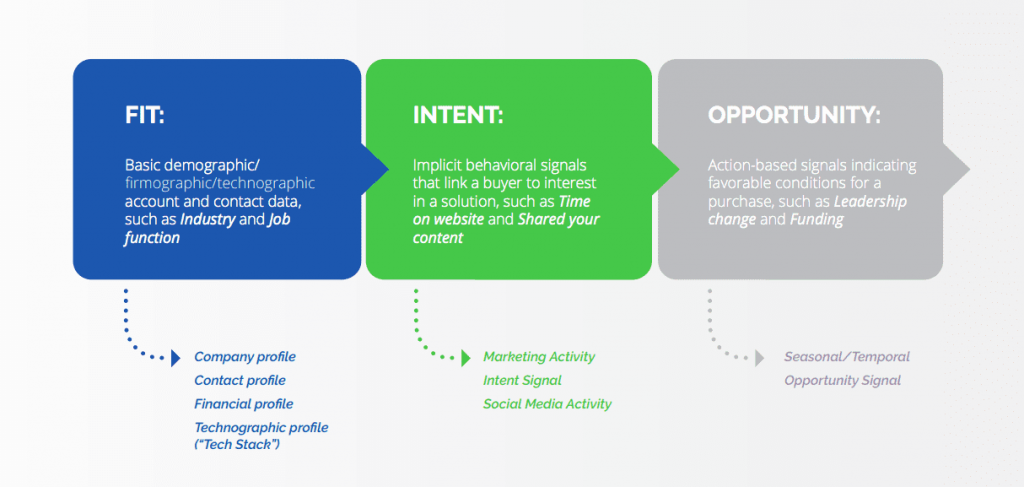Events and trade shows are expensive, even if you’re not a sponsor.
Even so, they are still one of the best ways to get your solution in front of a crowd of likely prospects: 41% of companies consider event marketing to be their top channel for lead generation.
You can find lots of tips online for generating more leads at trade shows and corporate events: spend more money on better real estate on the event floor, spend more money on prizes and giveaways, send more people, etc.
But many of the people taking your swag – and the attention of your sales reps – are NOT good fits for your product.
Trade shows are a small(ish) pond of like-minded prospects where your sales reps can catch a lot of really big fish. But before you go fishing, you’re going to need to do some pre-event work to make sure your time is well spent. Here are some tips:
1. Identify Who’s Going to the Event.
Catch the right fish in your net. There’s a reason this is Step #1.
ZoomInfo’s Director of Revenue Generation, Nina Wooten, has noticed a trend: People who aren’t able to identify good-fit attendees have to go for volume. They have to cast a wide net, usually with giveaways, prizes, and gift cards, because their next customer could be anyone. But giving away pricey swag increases the cost per lead.
In essence, you’re paying every person who stops by your booth, even though most of them will never be (and could never become) customers. $.$.$. Nina starts by locating a list of attendees or sponsors. If you can find this data, look for:
who you already know
contacts and companies that are a great fit for your product or service
attendees to contact ahead of time.
In the quantity vs. quality dichotomy, the scenario described above is definitely the quantity route.
Find a way to curate a list of trade show or conference attendees, though, and the rest of the job is much easier – and cheaper.
And look for company names and target contact names or roles, if possible.
But what if the event hasn’t publicly announced attendees or sponsors?
If you’re an event sponsor, you’ll probably get a list of “cloaked” attendees that includes only their titles and their company – not individual names. Or you had to pay for a one-time use of a still-limited list of contact data. Also, not ideal. If you’re walking the event and don’t have a booth, all you have to go off of is the company sponsors.
Still, one way or another, it’s worth a marketer’s time to go through that list to identify the actual people associated with those companies and titles.
Pro Tip: Create a list using the primary industry audience of the trade show within a 50-mile radius. Does your team actually do that? It’s time-consuming, yes.
With this data in hand, marketers can identify which prospects to focus on during the show and can begin pre-marketing to these individuals.
2. Prioritize Pre-Event Outreach.
Once you know who’s going to the event, you can prioritize prospects. In a sea of hundreds of booths and thousands of people, this is extremely helpful for both your sales and marketing teams.
There are a lot of ways to prioritize – based on fit, intent, and opportunity – but the important thing is that you do it, so you know where to start.

Start by looking for patterns among your best customers:
Industry: Which industry or industries do you usually sell to?
Company size/revenue: What’s the company size of your best customers? Enterprise, mid-market, or startup/small business?
Geographic location: Target companies or prospects within 50 miles of your event.
Tech stack: Does your service pair especially well with other technologies? Target them!
Pro Tip: In addition to looking for new event leads, trade shows and conferences are a great opportunity to establish deeper relationships with existing customers. After all, you’re already spending the money to travel to the event.
It’s enjoyable to plan events, like happy hours or dinners, and invite both prospects and current customers that are local to the event. This allows your leads to talk to current customers first-hand – and say thank you to your customers.
3. Launch a Multi-Touch Campaign.
Get Sales and Marketing aligned to make this work.
Multi-touch campaigns are very effective, but it takes both marketing and sales departments to make it work.
You can use paid social ads, email drips, phone calls, and sometimes even direct mail to make sure. But by the time the event rolls around, your prospect knows who you are – and has you on their schedule at the show.
Target event leads with social ads.
This is an easy win. Target your prospects with paid social media, advertising your presence at the event. You can also advertise free demos or other promotions.
Personalized email
Take that list from point 1, that you segmented by customer vs. prospect, and create personalized email sequences for each.
Call cadence
If your company has an outbound sales team, share your lead list with the sales team and ask them to make some calls, inviting the prospect to book a meeting, schedule a demo – or at least stop by your booth.
The goal of all of this? To put your company on their radar and book a meeting – or at least say “hi.”
4. Motivate Attendees to Visit Your Booth or Book a Meeting.
Keep your eyes on the prize.
Your event strategy may change whether you’re walking the floor or have a booth, but the goal is the same: To book a meeting or demo.
Amid the hustle and chatter of a trade show, set a concrete goal of a certain number of prospects to engage, or badges to scan, and stay focused on meeting it.
If you’re walking the event:
If you’re not tethered to a booth, grab your list of leads and look at the event map. Circle the booths of your prospects and plot out a path on the event map.
Knowing the layout and schedule is an advantage because it gives you time to strategize ways to drive engagement back to your own booth or team members. Additionally, having an idea of how the event will run can give you insight into the best time to schedule meetings with contacts prior to the show.
If you have a booth:
Of course, you want a lot of traffic to your booth, so here’s where you can spend a little money. You can give away raffle tickets for a high-ticket electronics item like an iPad or fitness tracker.
Other good options are discount codes, product offers, and of course, company swag. This incentivizes people to stop by your booth but limits your spend. You still want a lot of activity around your booth, even if not everyone is a good-fit prospect.
Make sure that whoever is staffing the booth has a list of your prioritized accounts. When people approach your booth and introduce themselves, check to see if their company is on your list.
If it is, you’ve got your lead – or at least a foot in the door!
Give your attention to attendees who are from your target accounts. Get their business card, scan their badge, or even connect with them on LinkedIn. Better yet, get them to agree to a meeting on the spot.
Remember, the objective is to book a meeting or a demo. Every conversation you have should take you a step closer to that goal.
5. Enrich Your Post-Show Leads.
Business cards and badge scans don’t tell the whole story. The event is done – but your job is not.
You now have two batches of contacts: 1) Those who were on your priority list from the beginning, whom you were able to connect with at the show; and 2) new names.
Because attendees don’t have to enter accurate information for a badge scan, you’ll get a lot of garbage phone numbers, and titles for that list of new names:
Sales Rockstars
Account-Based Queen
Chief Robot Whisperer
Software Ninja
Details on business cards are usually reliable, though it’s not a lot of information.
Pro Tip: No business card? No problem! Screenshot their LinkedIn profile to remember this new contact. Also – take detailed notes on a person’s business card for personalized follow-up.
So the next step to generate good event leads is to clean and enrich the lead data after the show: industry, company size, department budget, tech stack, and any planned projects are all great data points, if you can find them, to ensure your prospect is a good fit, and you’re not wasting your time.
You can also try to match prospects to existing accounts within your CRM, outsource the data enrichment to an outside research team, or do some internet research yourself.
No one wants to waste valuable time following up on leads that stand no chance of becoming customers. The goal of post-event data enrichment is the same: To determine if leads can be qualified for follow-up.
6. Launch a Follow-Up Campaign.
No matter how perfect a prospect account is, it’s possible – even likely – that the person you connected with at the event is not the decision-maker for your product. And if you engaged with decision-makers at the show – fantastic!
Either way, there are a lot more individual contributors at events than upper management (who actually have the ability to sign the dotted line and spend money on your solution).
But first, take a deep breath, and give your prospects space.
Take this time to organize your new prospects in a spreadsheet, including the detailed information you gathered.
Then it’s time to give them a call. Remind them of your meeting and conversation, and ask for a demo. If your research reveals that the names you got are not actually in a buying position – that’s OK too! Call or email and ask for a referral to a decision-maker.
You can work through your new list of prospects and begin contacting them with their unique subject lines or follow-up phone calls.
It’s the same laser focus at every step: Get a meeting. Book a demo.
So many sales reps and marketers walk into a trade show, look around the room, and become completely overwhelmed. They’ll talk to anyone willing to listen, go home with a stack of business cards … and are never able to return the kind of ROI that their leadership team is looking for from expensive events.
Once you are tracking leads and making deals from all your hard work, it is time to set the next sales campaign into motion and start planning for the next trade show.
Final Thoughts on Trade Show Lead & Event Generation
Trade shows can be a great way to generate a lot of warm leads in a short period of time. But if you’re looking around the conference room or trade show wondering where to start, it’s already too late.
To turn those great conversations into revenue, lay the groundwork beforehand, keep your eye on the goal, and watch your pipeline grow!


